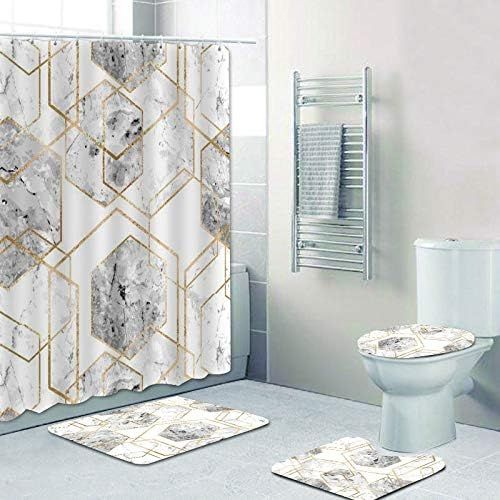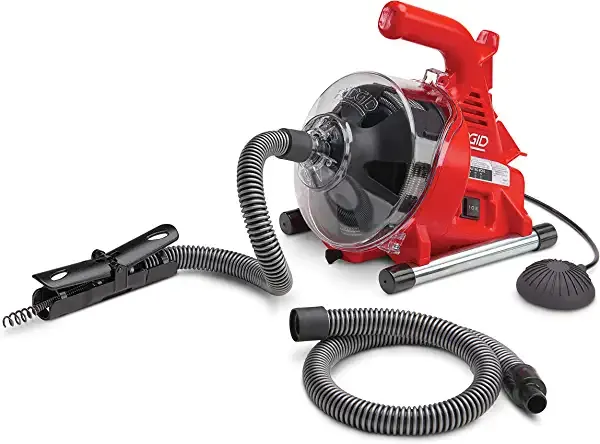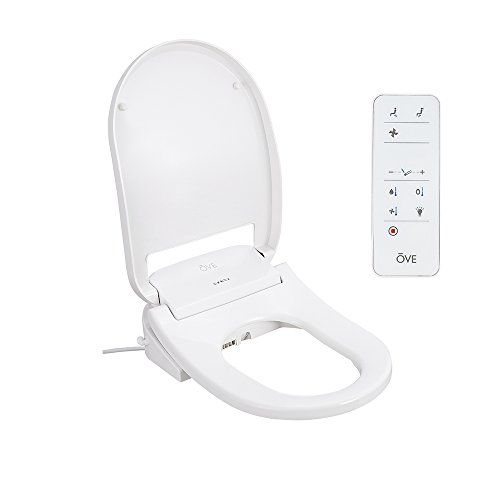How To Clean A Flooded Bathroom of 2025
Are you dealing with a flooded bathroom and feeling overwhelmed? Don’t worry, we’ve got you covered.
In this article, we will guide you through the process of cleaning up and restoring your flooded bathroom.
First, it’s crucial to assess the damage and ensure your safety. Once you’ve done that, it’s time to roll up your sleeves and remove the excess water.
Then, you’ll need to dry out the area to prevent further damage.
Next, we’ll show you how to clean and disinfect the affected surfaces. It’s essential to inspect for any hidden damage and address it promptly.
To prevent future flooding, we’ll provide you with some practical tips and strategies. However, in some cases, it might be necessary to hire professionals for a thorough restoration.
Lastly, we’ll help you learn from this experience, so you’re better prepared in the future. Buckle up, and let’s get your flooded bathroom back to its clean and functional state!
Key Takeaways
- Assess the damage and ensure safety
- Remove excess water using wet/dry vacuum, buckets, or towels
- Promote drying by opening windows and using fans or dehumidifiers
- Clean and disinfect surfaces using mild detergent and disinfectant
Assess the Damage and Ensure Safety
Now it’s time to assess the damage and make sure you’re safe in your flooded bathroom. The first step is to assess the safety of the situation. Check for any electrical hazards by turning off the power to the bathroom at the main circuit breaker.
If the water level is high, it’s important to avoid walking through it to prevent slips and falls. Next, evaluate the extent of the damage. Look for any structural damage, such as sagging ceilings or walls, and make note of any items that have been affected by the flood.
Start damage control by removing any standing water using a wet/dry vacuum or mop. Open windows and turn on fans to aid in the drying process. Remember to wear protective gear, such as gloves and boots, to protect yourself from potential contaminants in the water.
Remove Excess Water
To start, you’ll want to get rid of the extra water in the bathroom. This step is crucial to prevent further damage and ensure a safe environment. Here’s a simple yet effective way to remove excess water:
| Step | Method | Tips |
|---|---|---|
| 1 | Use a wet/dry vacuum | Ensure the vacuum is suitable for water and follow the manufacturer’s instructions. |
| 2 | Utilize buckets or containers | Scoop up the water and pour it down the drain or outside. Be careful not to spill or overfill the buckets. |
| 3 | Use towels or mops | Absorb as much water as possible by pressing towels or mops onto the wet areas. Wring them out into a bucket or sink. |
By following these steps, you can effectively remove excess water from your flooded bathroom. Remember, taking prompt action is essential to prevent future flooding and minimize potential water damage.
Dry Out the Area
To dry out the flooded bathroom, start by opening all the windows and doors to let fresh air in and improve ventilation. This will help in drying out the area faster.
Next, use fans or dehumidifiers to circulate the air and remove excess moisture.
Finally, grab some towels or mops and absorb any remaining moisture on the floors and walls.
By following these steps, you can effectively dry out the area and prevent any further damage or mold growth.
Open windows and doors for ventilation
By opening the windows and doors, you’ll not only provide much-needed ventilation, but also create a refreshing breeze that will help dry out your flooded bathroom. Ventilation is crucial in this situation because it helps to circulate the air and remove excess moisture.
Fresh air is important for several reasons. First, it helps to prevent the growth of mold and mildew, which can be harmful to your health. Second, it helps to eliminate any unpleasant odors that may have developed as a result of the flood. Additionally, fresh air can help to speed up the drying process by evaporating the water more quickly.
So, make sure to open all windows and doors in your bathroom and let the natural airflow do its job. It’s a simple step, but one that can make a big difference in restoring your bathroom to its pre-flood condition.
Use fans or dehumidifiers
Using fans or dehumidifiers can help expedite the drying process and improve air quality in your water-damaged space. When it comes to dehumidifiers, they’re extremely beneficial in removing excess moisture from the air. They work by pulling in damp air, extracting the moisture, and releasing dry air back into the room. This not only helps dry out the affected area faster but also prevents the growth of mold and mildew.
It’s important to place the dehumidifier in the center of the room for maximum efficiency. On the other hand, fans help to circulate the air and speed up the evaporation process. Position them strategically in the room to create a cross-ventilation effect, ensuring that the air is moving throughout the entire space.
By using a combination of fans and dehumidifiers, you can effectively dry out your flooded bathroom and restore it to its original state.
Use towels or mops to absorb remaining moisture
Once the water is gone, grab some towels or mops to soak up any lingering moisture, ensuring a fresh start for your space. If you don’t have enough towels, there are alternative options you can use. Consider using old t-shirts, bathrobes, or even newspapers to absorb the remaining moisture. Make sure to press down firmly to maximize absorption.
It’s crucial to remove all excess moisture from the bathroom to prevent mold growth. Mold thrives in damp environments, and a flooded bathroom provides the perfect breeding ground. Take extra care to dry hard-to-reach areas like corners and crevices.
After mopping up the moisture, be sure to thoroughly wash and dry the towels or alternative materials used to prevent the growth of mold and bacteria.
Clean and Disinfect
To effectively clean and disinfect a flooded bathroom, it’s important to employ proper techniques and products. Start by gathering the necessary cleaning supplies such as rubber gloves, a bucket, a scrub brush, a mild detergent, and a disinfectant. Begin by removing any remaining water using towels or a wet/dry vacuum. Once the excess moisture is gone, it’s time to clean and disinfect the affected areas. Refer to the following table for a visual representation of the cleaning and disinfecting techniques:
| Cleaning Technique | Disinfecting Technique |
|---|---|
| Scrub surfaces with a mild detergent | Spray disinfectant on all surfaces |
| Use a scrub brush to remove dirt and grime | Allow the disinfectant to sit for the recommended time |
| Rinse surfaces with clean water | Wipe down surfaces with a clean cloth |
Following these techniques will help ensure that your flooded bathroom is thoroughly cleaned and disinfected, creating a safe and hygienic environment.
Inspect for Damage
Check for any signs of damage in your bathroom to ensure its safety and functionality. Inspecting for leaks and evaluating water damage is crucial after a flood.
Here are three key areas to focus on:
-
Flooring: Look for any warping, buckling, or discoloration in your bathroom floor. These signs indicate water damage and may require repairs or replacement.
-
Walls: Check for any moisture stains, peeling paint, or bubbling wallpaper. These issues suggest water has seeped into the walls and could lead to mold growth if not addressed promptly.
-
Fixtures and Pipes: Inspect all faucets, toilets, and pipes for leaks or cracks. Even minor leaks can cause significant damage over time, so be thorough in your examination.
By carefully inspecting these areas, you can identify any damage caused by the flood and take appropriate action to restore your bathroom’s safety and functionality.
Repair or Replace Damaged Items
When it comes to repairing or replacing damaged items in your flooded bathroom, there are a few key points to keep in mind.
First, make sure to fix any plumbing issues that may have caused the flooding in the first place. This could involve repairing or replacing pipes, valves, or fixtures.
Next, assess the damage to the flooring and drywall, and replace any that are beyond repair.
Finally, if the damage is extensive or you’re unsure of how to handle it, consider seeking professional help to ensure the job is done properly and safely.
Fix plumbing issues
Take a moment to inspect the plumbing under your bathroom sink and see if there are any visible leaks or loose connections. Fixing leaks is crucial to prevent further damage and water wastage.
Look for any signs of water pooling or dripping and tighten any loose connections. If you notice any leaks, use plumber’s tape or a pipe sealant to seal the affected areas.
Additionally, unclog drains to ensure proper water flow. Use a plunger or a drain snake to remove any debris or blockages. If the clog persists, try using a mixture of baking soda and vinegar to break it down. Let it sit for a while, then flush it with hot water.
Regularly inspecting and fixing plumbing issues will help maintain the functionality and prevent future flooding in your bathroom.
Replace damaged flooring or drywall
Replacing damaged flooring or drywall can significantly improve the overall appearance and functionality of your bathroom, giving it a fresh and inviting atmosphere. When dealing with a flooded bathroom, it’s crucial to assess the extent of the damage and consider repair options.
Here are three key steps to guide you through the process:
-
Remove the damaged flooring or drywall: Start by carefully removing the affected materials. Use a utility knife to cut along the edges and pry off the pieces. Dispose of them properly to prevent mold or further damage.
-
Repair any underlying issues: Before installing new flooring or drywall, address any plumbing or waterproofing problems that may have caused the damage. Fix leaking pipes, reinforce seals, and ensure proper ventilation to prevent future issues.
-
Choose waterproofing solutions: To protect your bathroom from future flooding, consider using waterproof materials. Opt for moisture-resistant flooring options like ceramic tiles or vinyl, and use waterproofing membranes or sealants on the walls and floor.
By following these steps and investing in proper repair and waterproofing solutions, you can restore your bathroom’s functionality and prevent future flooding incidents.
Consider professional help for extensive damage
Now that you’ve replaced the damaged flooring or drywall in your flooded bathroom, it’s time to consider seeking professional help if the damage is extensive. Hiring contractors who specialize in water damage restoration can save you time, effort, and ensure that the job is done correctly. These professionals have the expertise and equipment needed to thoroughly dry out your bathroom and prevent mold growth, which can be a serious health hazard.
Additionally, if the flood damage is significant, it may be worth considering filing an insurance claim. Insurance policies often cover water damage caused by burst pipes or natural disasters. Contact your insurance provider to understand the coverage details and start the claims process. Document the damage with photographs and keep records of any expenses related to the cleanup and restoration.
By hiring professionals and navigating the insurance process, you can effectively address extensive flood damage in your bathroom and regain a safe and functional space.
Prevent Future Flooding
To prevent future flooding in your bathroom, it’s important to address any plumbing issues that may be causing leaks or backups. This could include repairing or replacing damaged pipes, fixing faulty valves, or clearing clogged drains.
Additionally, installing flood prevention devices such as backflow preventers, sump pumps, or water alarms can help mitigate potential water damage.
Lastly, make sure to regularly inspect and maintain your bathroom fixtures, including checking for any signs of water damage, loose connections, or worn out seals. Taking these proactive measures will help keep your bathroom dry and prevent future flooding.
Address any plumbing issues
If you’re dealing with a flooded bathroom, it’s crucial to first address any plumbing issues that may be causing the problem.
One common cause of bathroom flooding is leaky pipes. Inspect all the pipes in your bathroom for any signs of leaks and repair them immediately. Leaking pipes can lead to water accumulation, which can eventually result in a flooded bathroom.
Another issue to consider is clogged drains. Hair, soap scum, and other debris can easily build up and block your drains, causing water to overflow. Prevent future flooding by regularly cleaning your drains and using drain covers to catch any potential clog-causing materials.
By taking care of these plumbing issues, you can avoid future bathroom floods and keep your bathroom clean and dry.
Install flood prevention devices
Ensure your peace of mind by installing flood prevention devices that will protect your home from potential water disasters. Here are four flood prevention systems you should consider:
-
Sump Pump: Install a sump pump in your basement or lowest level to remove excess water and prevent flooding. Regularly check and maintain the pump to ensure it’s functioning properly.
-
Backflow Preventer: This device prevents sewage or contaminated water from flowing back into your home’s plumbing system during heavy rainfall or flooding. Install one on your main sewer line to avoid costly and unsanitary backups.
-
Water Leak Detectors: These devices detect leaks and alert you before they become major issues. Place them near appliances, water heaters, and pipes to catch any leaks early on.
-
Rain Barrels: Collect rainwater from downspouts and use it for watering plants or flushing toilets. This reduces strain on your drainage system during heavy rain.
Remember, installing flood prevention systems is crucial, but regular maintenance is equally important to ensure their effectiveness.
Regularly inspect and maintain bathroom fixtures
Now that you have taken steps to prevent flooding in your bathroom, it is important to regularly inspect and maintain your bathroom fixtures to ensure they are functioning properly. By doing so, you can identify any potential issues early on and prevent them from escalating into a flooded bathroom situation. Inspect your fixtures, such as faucets, showerheads, toilets, and drains, for any leaks, cracks, or signs of wear and tear. Make sure to tighten any loose connections and replace any faulty parts promptly. Additionally, it is crucial to clean your fixtures regularly to prevent clogs and buildup of debris. By incorporating these simple maintenance tasks into your bathroom routine, you can minimize the risk of a flooded bathroom and keep your fixtures in optimal condition.
| FIXTURES | INSPECTION | MAINTENANCE |
|---|---|---|
| Faucets | Check for leaks and drips. | Repair or replace faulty parts. |
| Showerheads | Ensure proper water flow. | Clean and descale regularly. |
| Toilets | Check for leaks and flush properly. | Fix leaks and replace worn-out parts. |
| Drains | Look for clogs and slow drainage. | Clean regularly with a drain cleaner. |
Restore the Bathroom
To fully recover the bathroom after a flood, it’s important to bring back its original functionality and aesthetic appeal.
Start by removing any remaining water and debris from the bathroom. Use a wet/dry vacuum or a mop to get rid of the excess water, and dispose of any damaged items properly.
Next, thoroughly clean and disinfect all surfaces to prevent the growth of mold and bacteria. Use a mixture of bleach and water to sanitize the bathroom fixtures, such as the toilet, sink, and bathtub.
Replace any damaged tiles or flooring to restore the bathroom’s appearance.
Finally, take preventive measures to avoid future flooding, such as installing a sump pump or sealing any cracks or gaps in the bathroom.
By following these steps, you can restore your bathroom and prevent future flooding.
Consider Hiring Professionals
You might want to think about bringing in professionals to help you out with this task. Cleaning up a flooded bathroom can be a daunting and time-consuming task, and hiring professionals can save you a lot of stress and effort. Here are some discussion ideas to consider:
-
Cost-effective alternatives: Before hiring professionals, explore cost-effective alternatives such as renting specialized equipment or seeking advice from local restoration companies. This can help you save money while still getting the job done effectively.
-
DIY methods: If you prefer to tackle the cleanup yourself, there are DIY methods you can try. These include using a wet/dry vacuum to remove standing water, using fans and dehumidifiers to dry out the space, and disinfecting surfaces with bleach or other cleaning agents.
Remember, when dealing with a flooded bathroom, safety should always be a priority. If you’re unsure about the extent of the damage or the necessary steps to take, it’s best to consult with professionals who have the expertise and equipment to handle the situation efficiently.
Learn from the Experience
Reflecting on this situation, remember the valuable lessons learned from this experience to better prepare for any future challenges that may arise.
When dealing with a flooded bathroom, it’s important to learn from others who have faced similar situations. Seek advice from friends, family, or even online communities who’ve successfully dealt with such incidents. They can provide valuable insights and tips on how to handle the cleanup process effectively.
In addition, it’s crucial to actively find solutions to prevent further damage and ensure thorough cleaning. Start by removing any standing water using a wet vacuum or mop. Open windows and use fans to promote air circulation and aid in the drying process. Remove any damaged items and thoroughly clean and disinfect all surfaces to prevent mold growth.
By learning from the experiences of others and actively seeking solutions, you can effectively clean a flooded bathroom and minimize the damage caused by such incidents.
Frequently Asked Questions
How long does it take for a flooded bathroom to completely dry out?
It can take several days for a flooded bathroom to completely dry out, depending on the extent of the water damage. Proper ventilation and dehumidification can speed up the drying time.
Can I use regular household cleaning products to disinfect a flooded bathroom?
Yes, you can use regular household cleaning products to disinfect a flooded bathroom. Make sure to choose products that are effective against bacteria, viruses, and mold. Follow the instructions on the label for the best results.
Should I be concerned about mold growth after a bathroom flood?
You should be concerned about mold growth after a bathroom flood. Mold can thrive in damp environments and can lead to health risks. Taking steps for mold prevention is important to ensure a safe and healthy environment.
How can I prevent future flooding in my bathroom?
To prevent future flooding in your bathroom, there are several bathroom flood prevention measures you can take. Install a sump pump, seal any cracks or gaps, regularly inspect plumbing, and ensure proper drainage.
When should I consider hiring professionals to help with the cleanup and restoration process?
You should consider hiring professionals for the cleanup and restoration process if the damage is extensive, the water is contaminated, or if you are unsure of how to properly clean and restore your bathroom.
Conclusion
In conclusion, cleaning a flooded bathroom requires a thorough assessment of the damage and ensuring your safety. By removing excess water, drying out the area, and cleaning and disinfecting, you can prevent further damage and potential health hazards.
Inspecting for any underlying damage and taking preventative measures can help avoid future flooding. Restoring the bathroom to its original state may be a time-consuming task, so considering hiring professionals could expedite the process.
Lastly, learning from this experience will equip you with knowledge to handle any future flooding situations efficiently.












.jpg)








